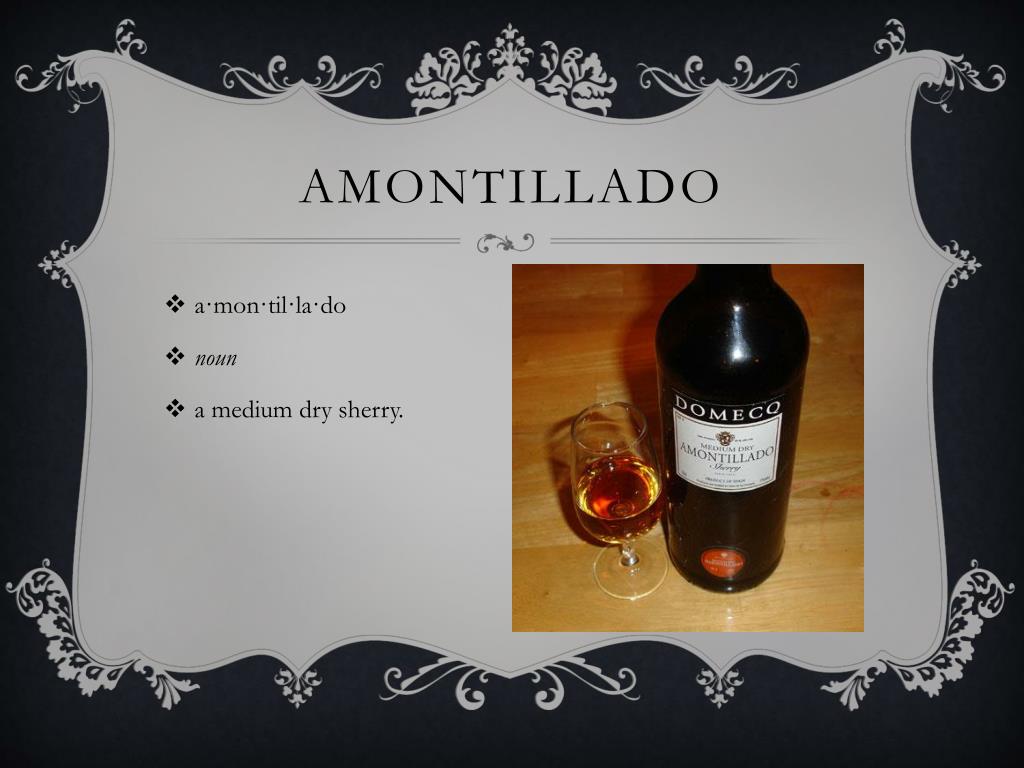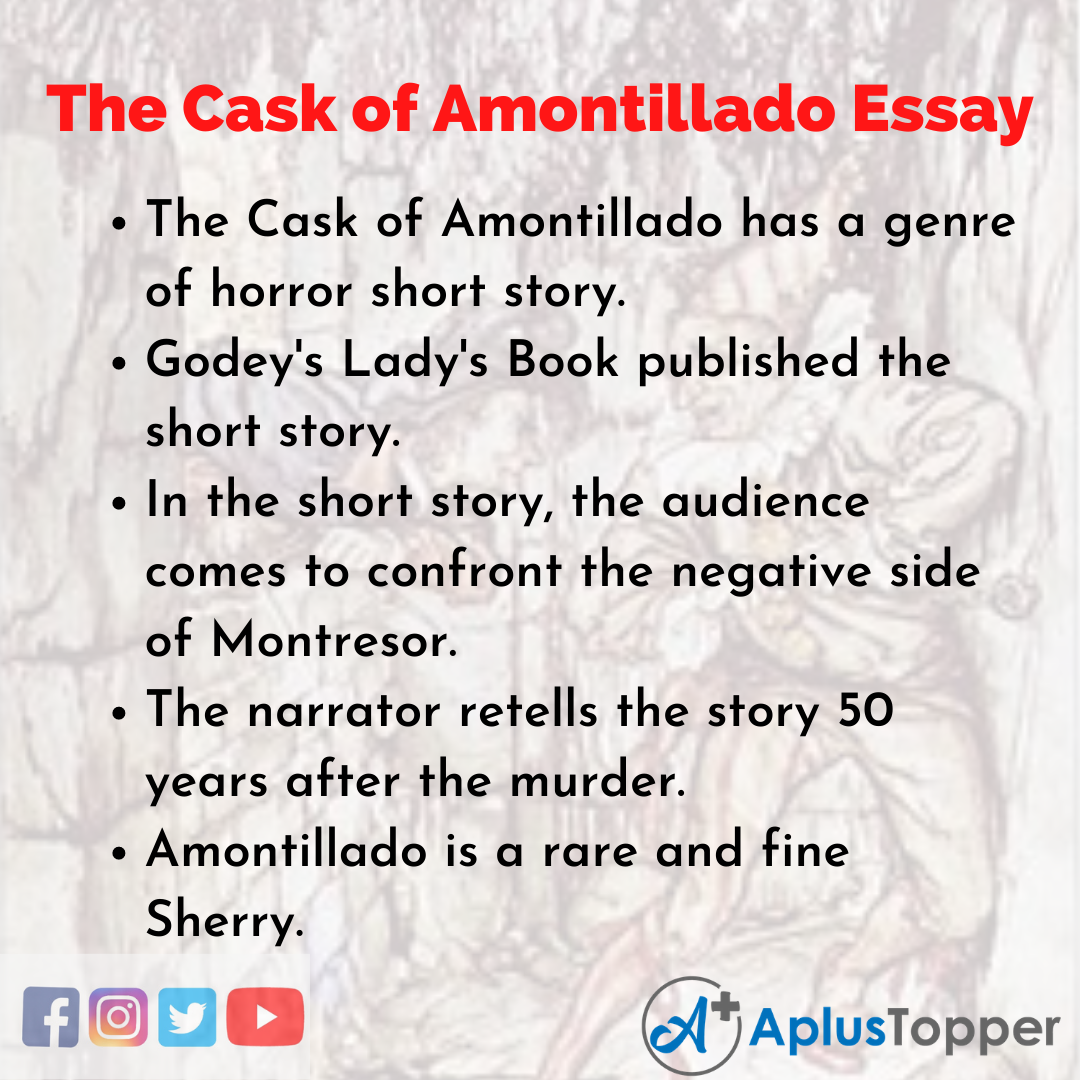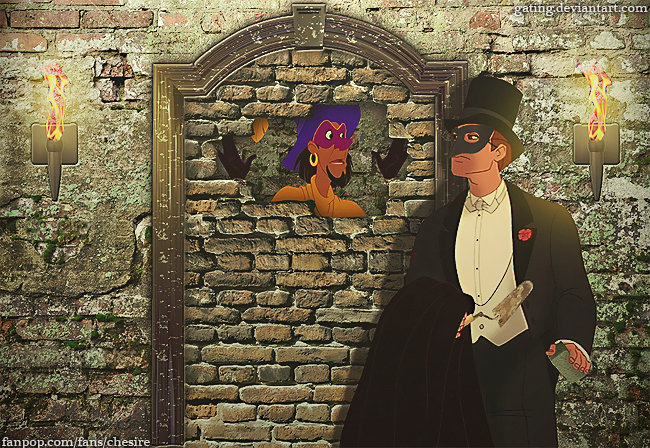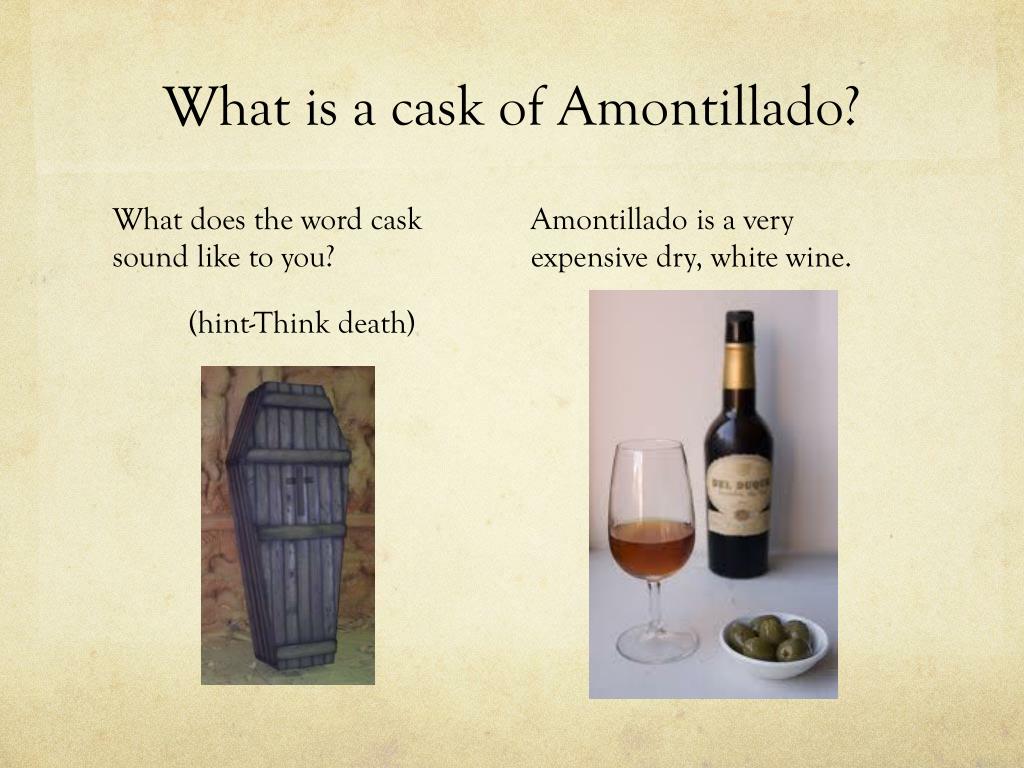

The treasure the narrator possesses is the knowledge of the perfect revenge. Montresor: In French, mon tresor means my treasure. (2) Fortunato’s passion for good wine leaves him susceptible to flattery, flattery which Montresor provides. Fortunato understands that the trip will produce one of two results–free Amontillado or Montresor’s humiliation

It is probable that his venturing into the catacombs has little to do with his desire to serve Montresor. (1) Fortunato is extremely drunk, more than likely drunk on wine. The Amontillado represents two causes of Fortunato’s demise: The Cask of Amontillado: The word cask, a sturdy cylindrical container for storing liquids, and the word casket have the same root. It is the backdrop of carnival season that lends the story its fantastic nature, a nature trumped only by the madness of Montresor’s revenge. The Setting: The “supreme madness of carnival season” represents the supreme madness of the narrator’s mind. He had on a tight-fitting parti-striped dress and his head was surmounted by the conical cap and bells.” In short, Fortunato is dressed as a fool, a symbolic representation of what he is. Below are several examples of symbolism within the story: Fortunato’s Outfit: Fortunato’s carnival garb is described as follows: “The man wore motley. You can read the full story online at the Poe Museum website. It’s told by a first person narrator, Montresor, a nobleman.If you haven’t read the short story yet, you might want to read The Cask of Amontillado by Edgar Allan Poe before we start covering the symbolism and irony within the story. This gothic/horror tale is set in Europe during the late 18th or early 19th century.

“The Cask of Amontillado” by Edgar Allan Poe is a frequently anthologized short story and one of my favorites.



 0 kommentar(er)
0 kommentar(er)
